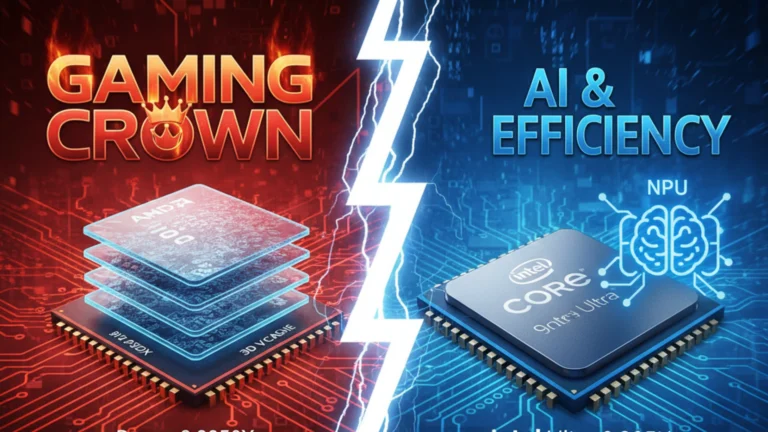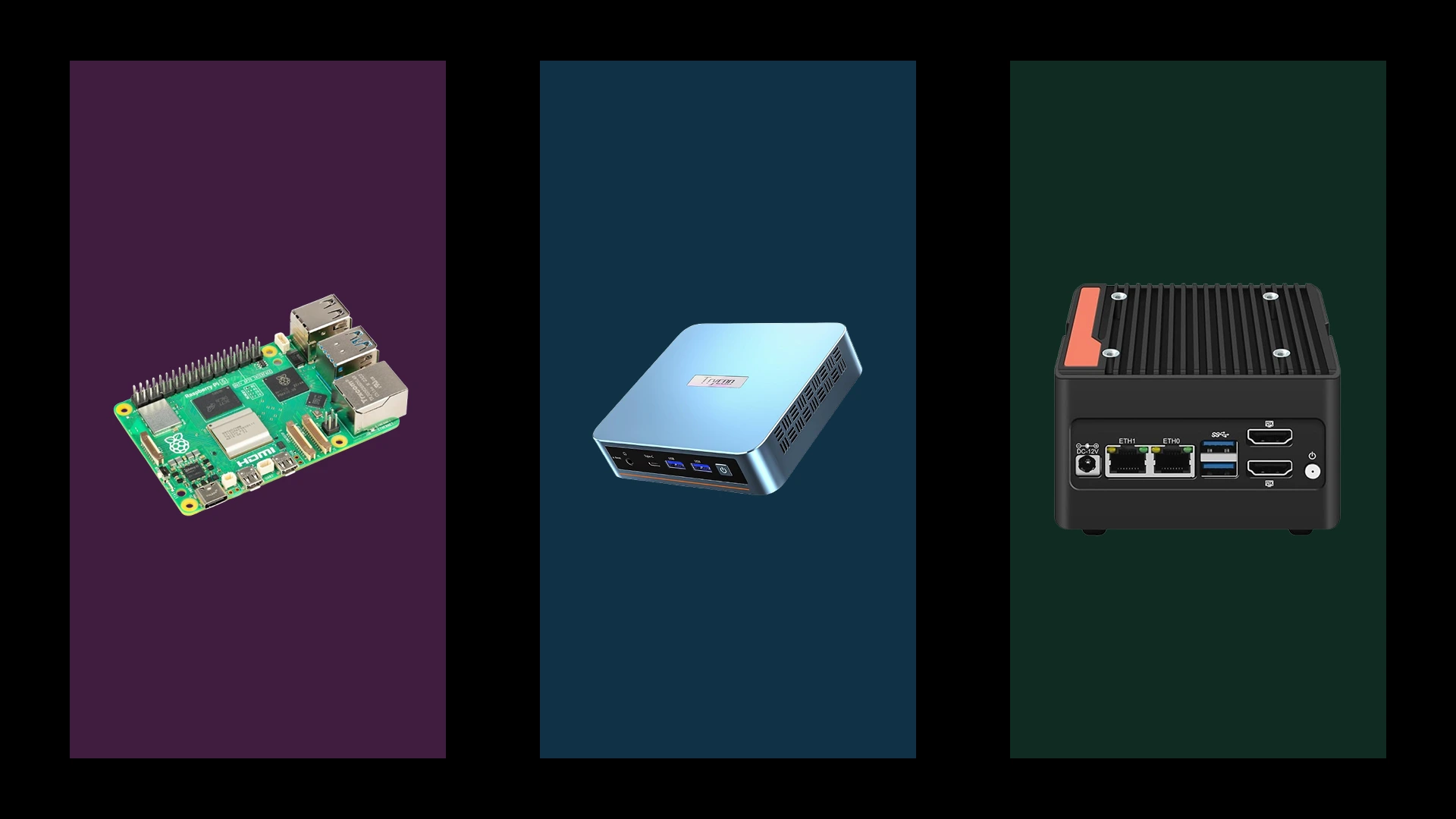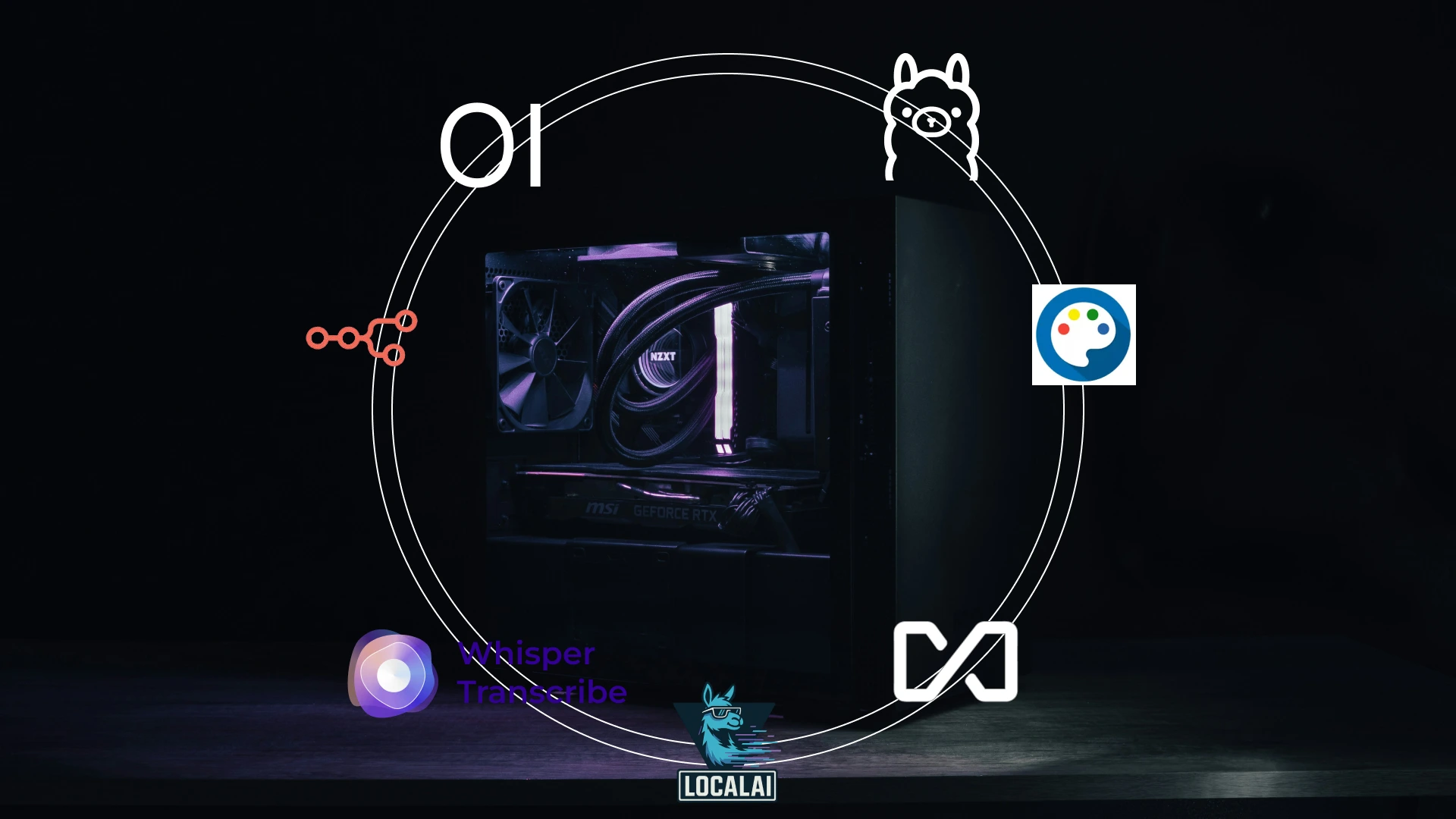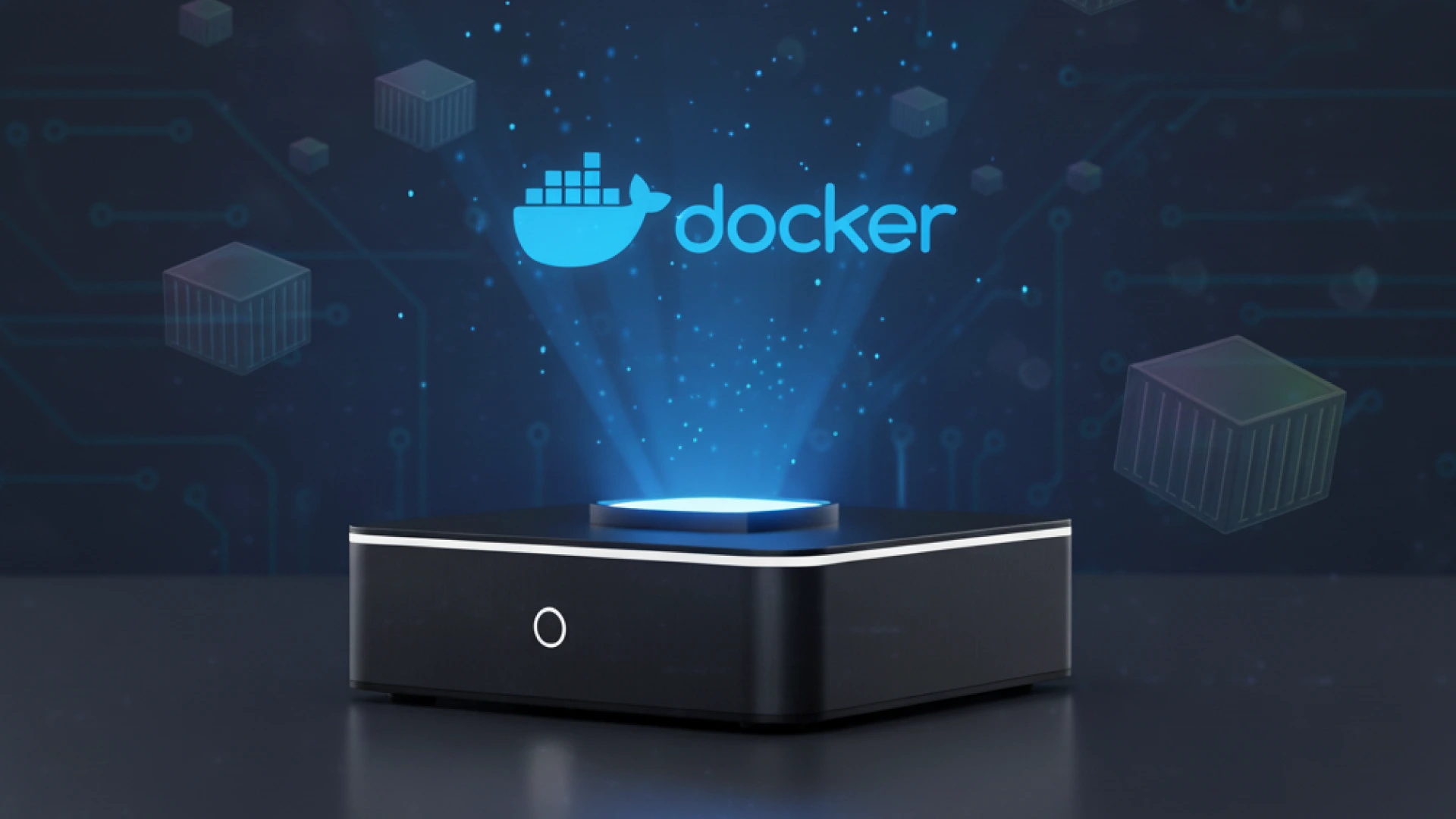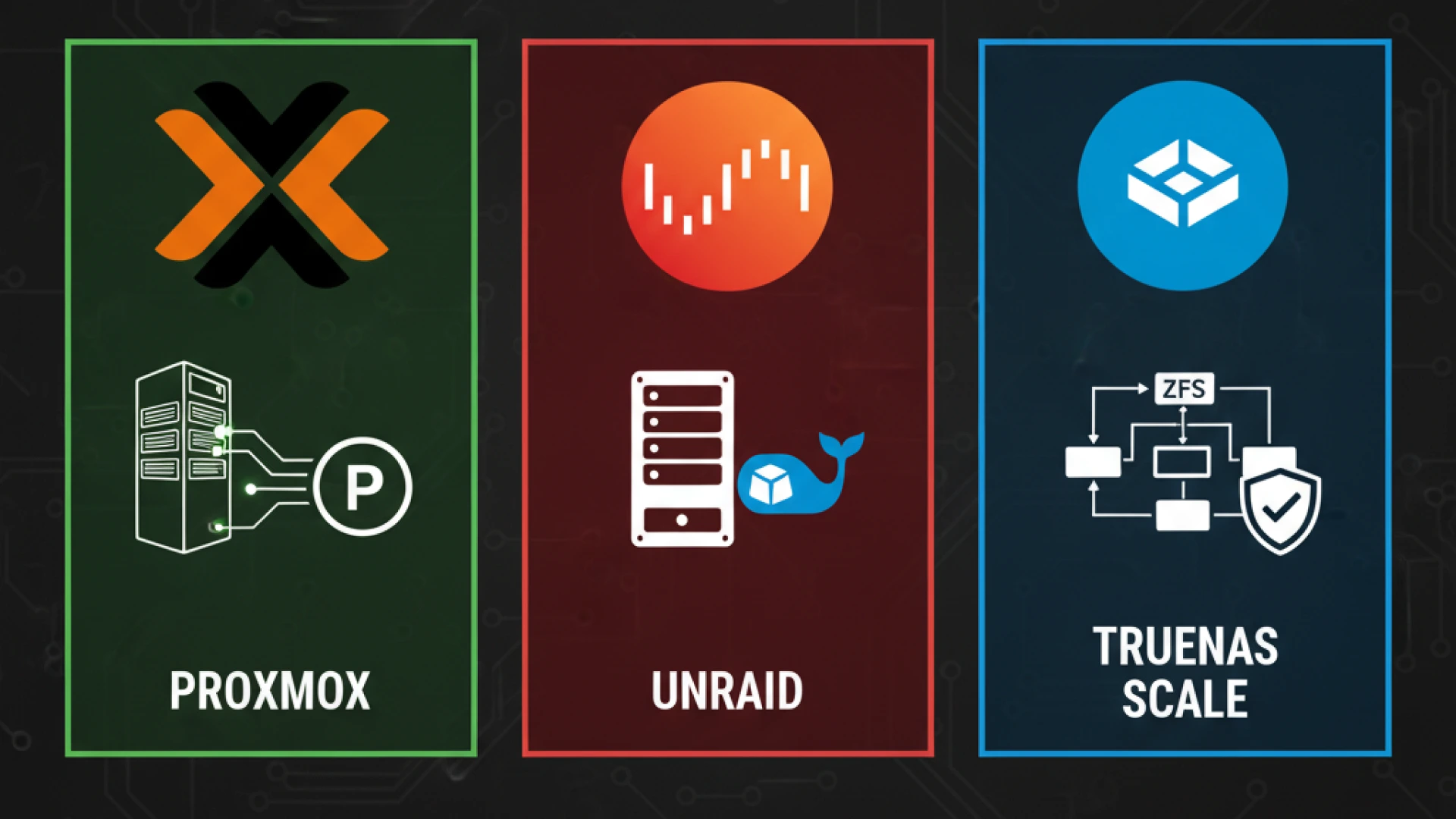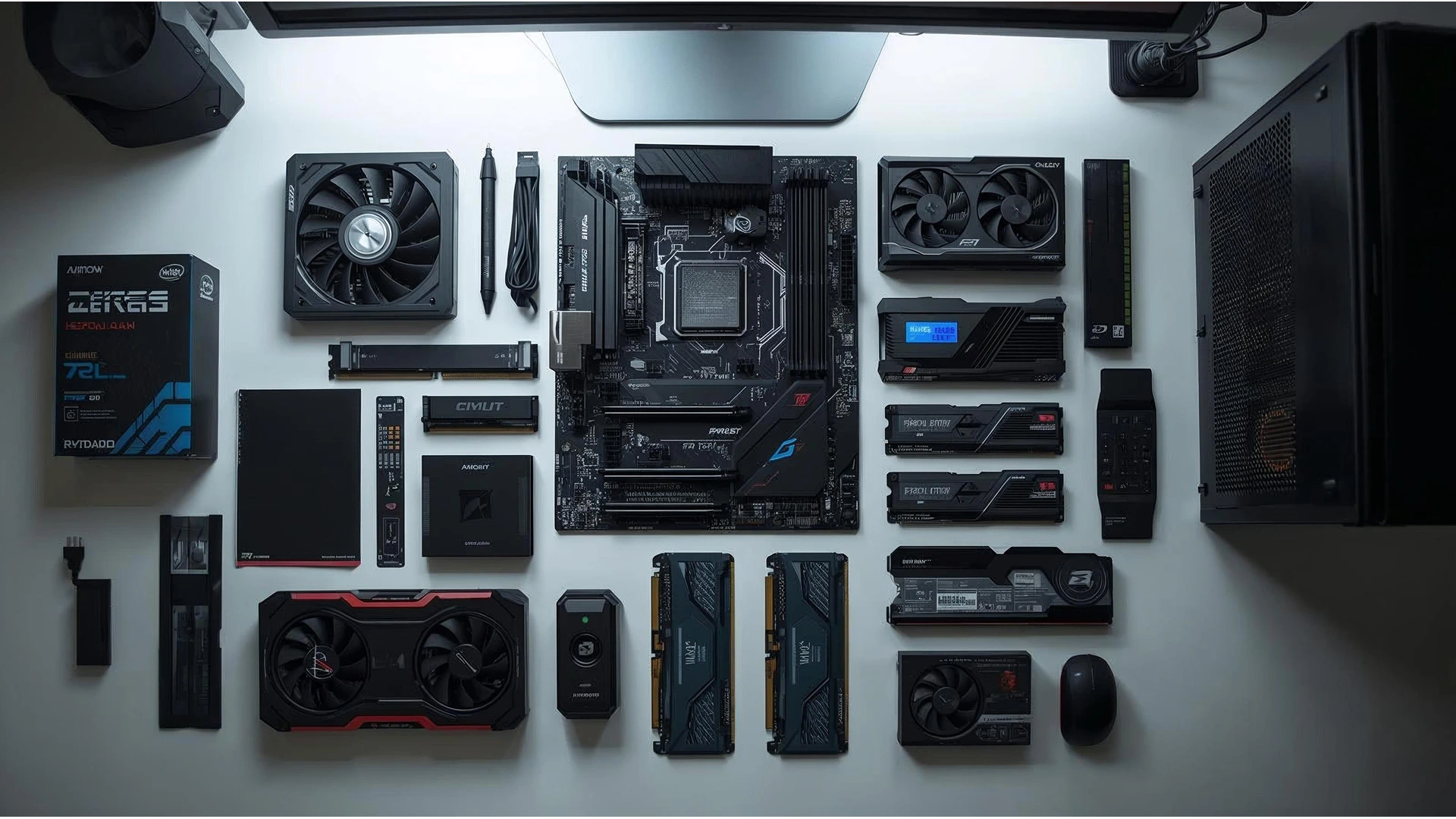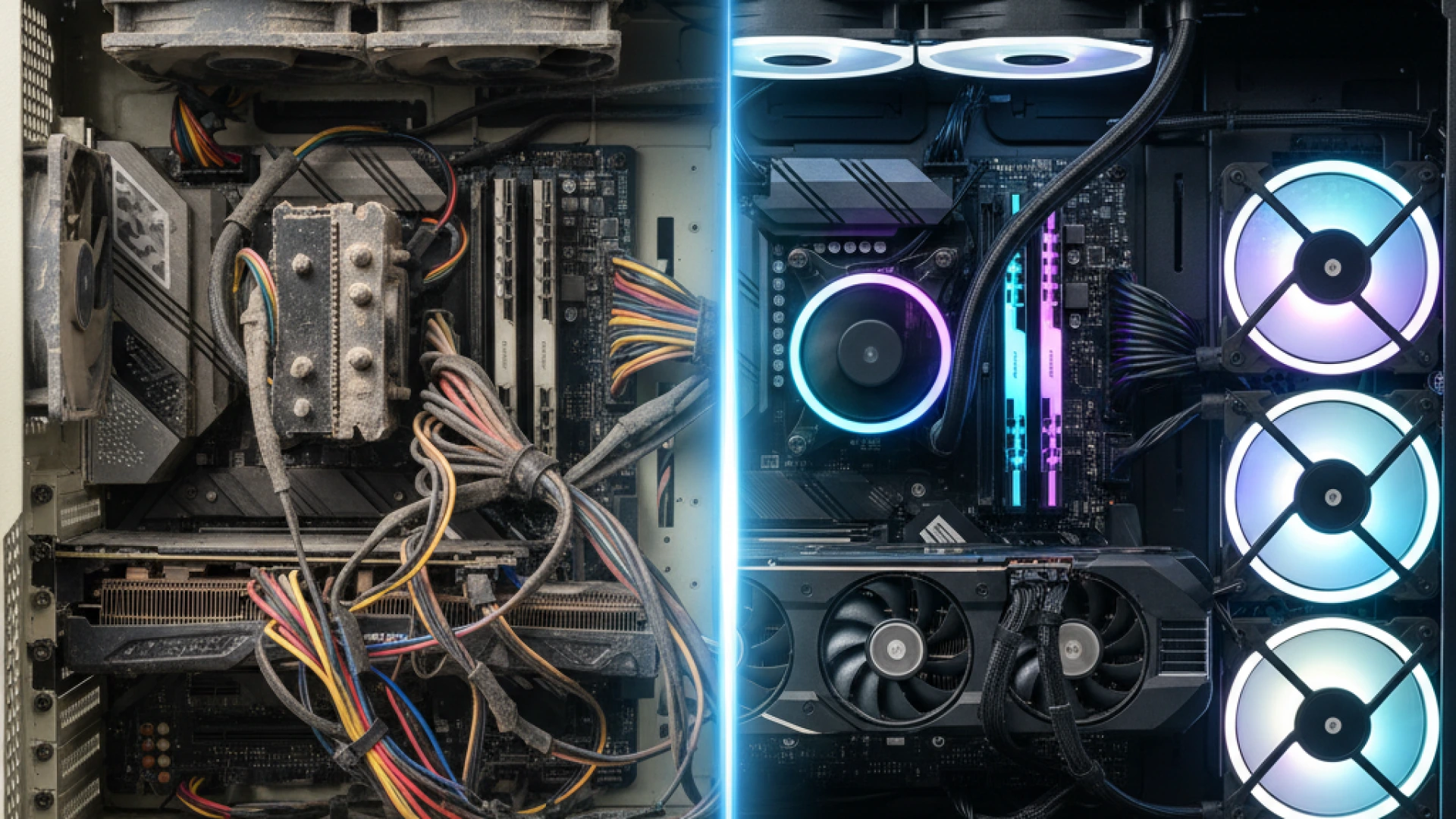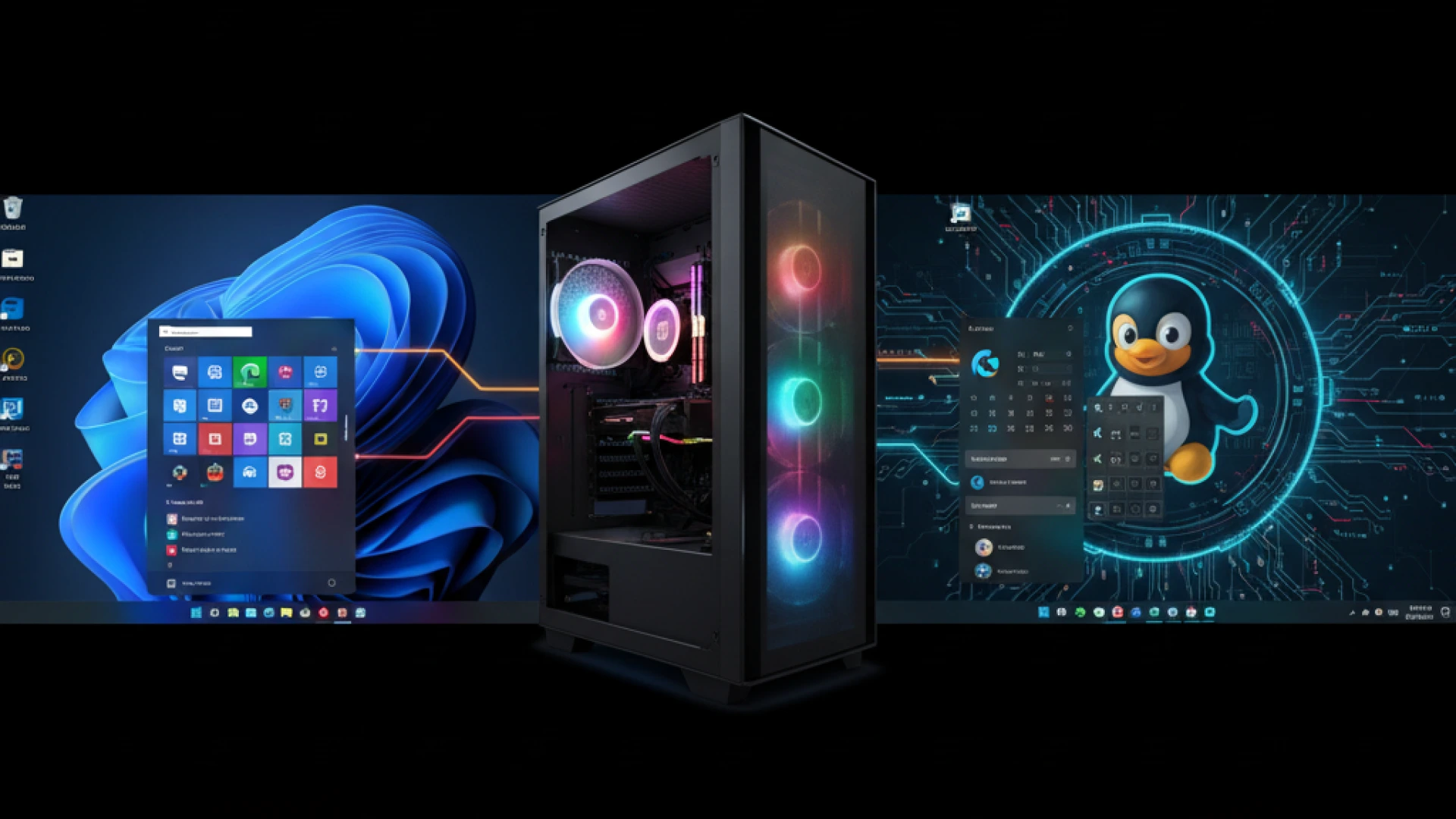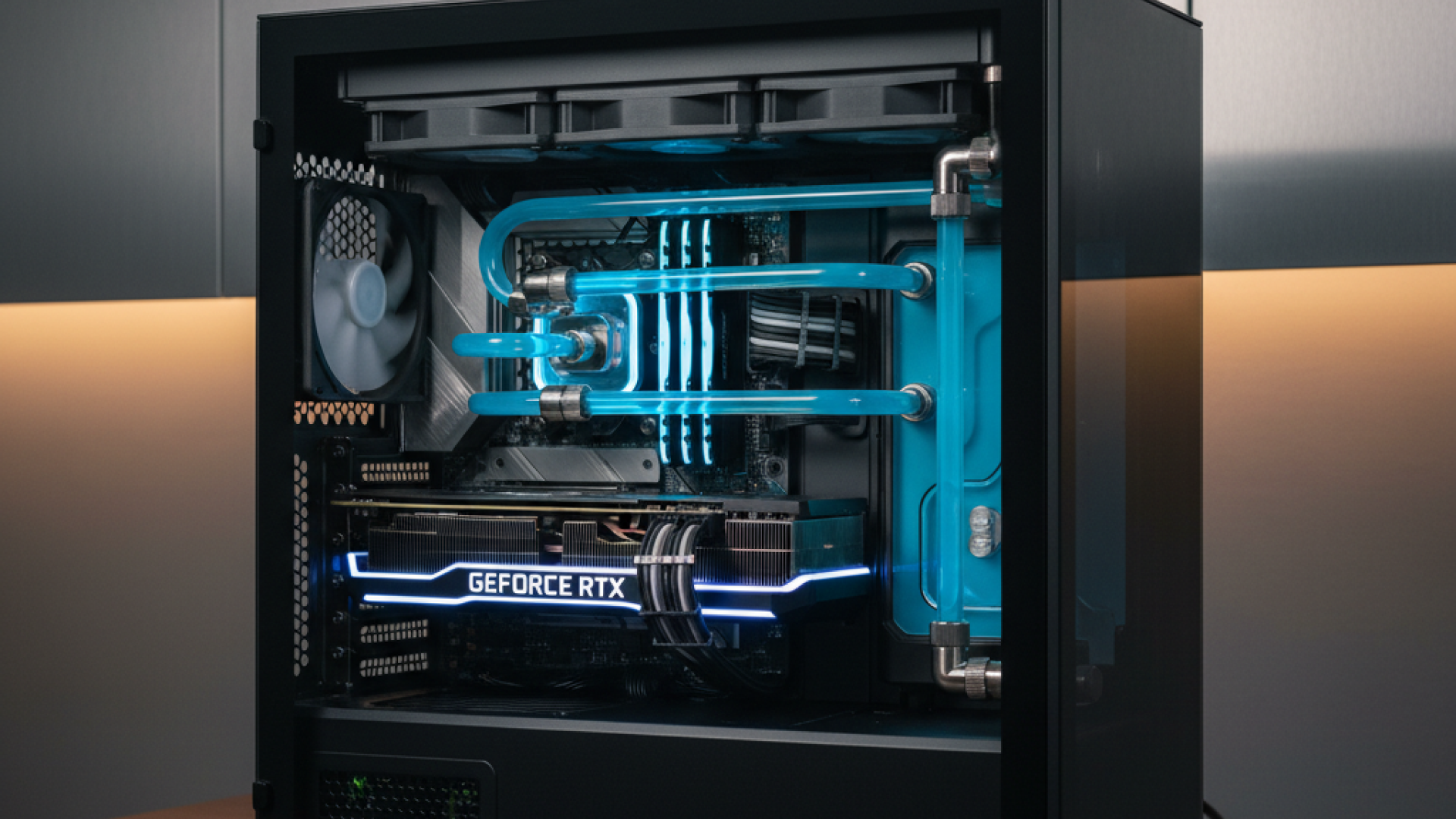The definitive CPU comparison 2025 is here, pitting the AMD Ryzen 9000 vs Intel Core Ultra in a clash of architectural philosophies. This isn’t an incremental update; it’s a battle for the soul of the modern processor. AMD claims the uncontested gaming crown with its revolutionary 3D V-Cache, while Intel counters with a power-efficient design and a sharp focus on integrated AI. For any PC builder, this raises the critical question: who actually wins for your specific build, and what is the best gaming CPU you can buy?
The internet is saturated with fragmented and contradictory reviews, creating paralysis for anyone ready to invest. This analysis cuts through the confusion by synthesizing comprehensive data from the industry’s most trusted voices, Gamers Nexus, Hardware Unboxed, Tom’s Hardware, and TechSpot. Our verdict is not based on a single test but on thousands of benchmark runs across seven different CPUs.
We will reveal the one processor that stands in a league of its own for pure gaming performance, demystify the practical value of Intel’s NPU, and provide crystal-clear, data-driven tier lists to eliminate your decision paralysis. The nuanced battle is defined, and the data holds the answer.
Our Methodology: How We Determined the Winners
Transparency is paramount. Our conclusions are drawn entirely from aggregated, reproducible, and independent CPU testing conducted by trusted sources, such as Gamers Nexus and Tom’s Hardware. This CPU benchmark aggregation forms the core of our tech review methodology, ensuring no single outlier review skews the results.
Our analysis covers the entire stack: AMD’s Ryzen 9 9950X, 9900X, 9700X, 9600X, and the 9800X3D, versus Intel’s Core Ultra 9 285K, 7 265K, and 5 245K.
We prioritized real-world gaming (1080p/1440p), professional rendering (Blender, Cinebench), and AI workflow tests over synthetic scores. Power consumption was measured at the wall under sustained load to provide a complete picture of performance and efficiency. This rigorous approach ensures data, not hype, determines our winners.
The Executive Summary: 5 Key Takeaways
For readers pressed for time, this CPU comparison summary delivers five data-driven conclusions to guide your 2025 purchasing decision.
- The Gaming King Is Untouchable: For the title of the best CPU 2025 has to offer for pure gaming, the AMD Ryzen 7 9800X3D stands in a league of its own. Independent testing confirms it delivers a staggering 34-35% higher average FPS at 1080p compared to Intel’s flagship Core Ultra 9 285K. This monumental lead, cemented by AMD’s 3D V-Cache technology, ends the debate for anyone building a dedicated gaming rig.
- Intel’s NPU is a Niche Feature, not a Game-Changer: Intel NPU explained in simple terms: it’s a specialized processor for low-power AI tasks. While it excels at background blur in video calls, its real-world impact for desktop users is minimal. With a performance of 13 TOPS, it falls short of the 40 TOPS required for major AI platforms like Windows Copilot+. For heavy AI workloads like Stable Diffusion, the NPU contributes less than 5%, as these tasks remain almost entirely GPU-bound.
- The Value Champion Isn’t a Flagship: The true CPU value pick for most builders is the AMD Ryzen 7 9700X. It delivers approximately 95% of the flagship gaming performance for hundreds of dollars less, making it the undisputed price-to-performance king. Its 65W TDP also means it’s easier and cheaper to cool, offering exceptional efficiency without significant performance sacrifice.
- Power Efficiency Goes Decisively to AMD in Gaming: When measuring frames per watt, the true metric for gaming efficiency, AMD’s X3D chips are unmatched. The Ryzen 7 9800X3D and the previous-generation 7800X3D are essentially tied for the lead, providing the highest gaming performance with relatively low power consumption. This translates to a cooler, quieter system without the high power draw and thermal output of competing processors.
- Platform Longevity Heavily Favors AMD: Your CPU choice locks you into a platform. AMD’s AM5 socket has confirmed support until at least 2027, offering a clear and affordable upgrade path for years to come. In contrast, Intel’s new LGA1851 socket historically has a shorter lifespan, typically supporting only 2-3 CPU generations. For builders who value future-proofing, AMD is the clear choice
Gaming Performance: The 9800X3D Revolution
The X3D Phenomenon: A Data-Backed Domination
The aggregated benchmark data reveals a performance chasm that redefines the best gaming CPU 2025 landscape. In a comprehensive 12-game test suite, the AMD Ryzen 7 9800X3D delivers a staggering 34-35% higher average FPS at 1080p compared to Intel’s flagship Core Ultra 9 285K. This is not a marginal victory but a consistent, reproducible rout across CPU-bound scenarios, cementing its status as the fastest gaming chip on the market.
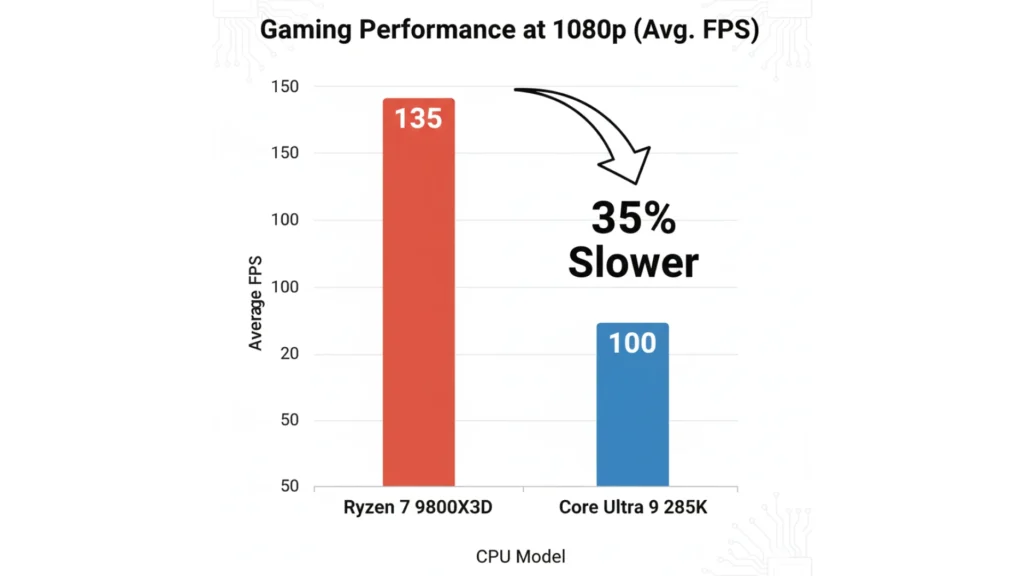
The lead stems from AMD’s revolutionary 3D V-Cache technology. The Ryzen 7 9800X3D is equipped with 96MB of L3 cache, which acts as a massive, high-speed reservoir for game assets, dramatically reducing latency. The benefit extends beyond higher averages; the 9800X3D benchmarks show significantly improved 1% low FPS, translating to buttery-smooth frame times and a consistently fluid gaming experience, free from microstutters during intense action.
Gaming Tier List: Data-Driven Rankings for Your Build
Here’s a crystal-clear, data-driven CPU gaming tier list to guide your decision, based on synthesized testing data.
| Tier | CPU | Key Strengths & Data Points | Best For |
|---|---|---|---|
| S-Tier (The King) | AMD Ryzen 7 9800X3D | ~35% lead at 1080p vs. Intel flagship; ~20% lead at 1440p . Unmatched smoothness from superior 1% lows. | Pure performance; 1080p/1440p high-refresh gaming; competitive esports; simulation games. |
| A-Tier (Flagship) | AMD Ryzen 9 9950X | A top-tier productivity chip that also delivers strong gaming performance, ideal for gaming-and-streaming hybrids. | Gamers who are also content creators and need no-compromise multi-threaded performance. |
| A-Tier (Flagship) | Intel Core Ultra 9 285K | A capable chip, but significantly behind the X3D in gaming. Its value lies in productivity, not pure frames. | Users whose priority is a balance of solid gaming and top-tier application performance. |
| B-Tier (Sweet Spot) | AMD Ryzen 7 9700X | A strong all-rounder and Intel’s best value. Excellent for a balanced gaming-and-productivity build. | The smartest buy for most, a perfect pairing with mid-to-high-end GPUs for 1440p gaming CPU builds. |
| B-Tier (Sweet Spot) | Intel Core Ultra 7 265K | A top-tier productivity chip that also delivers strong gaming performance, ideal for gaming-and-streaming hybrids. | Balanced systems where gaming is important but not the sole, extreme focus. |
| C-Tier (Budget) | Ryzen 5 9600X & Core Ultra 5 245K | Competent for 60 FPS gaming and esports, but shows limitations in modern, CPU-heavy AAA titles. | VALUE CHAMPION. Delivers ~95% of flagship gaming feel for far less. Its 65W TDP enables cool, quiet builds. |
The Critical 4K Reality Check
For builders targeting 4K resolution, here is the most crucial takeaway. The GPU becomes the overwhelming bottleneck. The massive pixel count pushes the workload squarely onto the graphics card. Consequently, the performance gap between an S-tier and a B-tier CPU shrinks to less than 5%.
Therefore, do not overspend on a CPU for a 4K build. The hundreds of dollars saved by choosing a Ryzen 7 9700X over a 9800X3D is far better invested in upgrading your GPU, which will yield a massively more significant performance uplift at 4K.
Productivity & AI: The NPU Reality Check
The NPU: Separating Hype from Reality
Intel’s marketing positions the Neural Processing Unit (NPU) in its Core Ultra processors as a cornerstone of the “AI PC.” However, independent testing reveals a more nuanced picture: the NPU is not a general-purpose AI accelerator, and understanding its true role is crucial for making an informed purchasing decision when evaluating an AI workload CPU.
What the NPU Is Good For
The NPU excels as a specialized, low-power co-processor for specific, always-on AI tasks, typically consuming only 3-5 watts. Its validated strengths include :
- Windows Studio Effects: It efficiently handles background blur, automatic framing, and eye contact correction during video calls.
- Real-Time Audio Processing: The NPU can power noise suppression algorithms that clean up audio in real-time during calls, even when the CPU is under heavy load.
What the NPU Doesn’t Do
For the heavy AI workload tasks that enthusiasts and creators often have in mind, the NPU’s role is minimal to non-existent.
- Heavy AI Workloads: Tasks like Stable Diffusion image generation or running local Large Language Models (LLMs) remain overwhelmingly GPU-bound. The NPU’s throughput is vastly outclassed by modern discrete GPUs, and in tests, enabling the NPU for these tasks results in negligible performance gains, often less than 5%.
- Professional Creative AI: AI features in applications like Adobe Premiere Pro and Photoshop, as well as AI-powered upscaling in Topaz Video AI, are designed to leverage GPU cores and do not currently utilize the NPU in any meaningful way.
Bottom Line: The NPU is a niche feature that offers genuine quality-of-life improvements for video conferencing and low-power ambient AI. It is not a reason to choose Intel for “AI work” involving generative AI or local LLMs. For those tasks, your investment is better spent on the most powerful GPU you can afford.
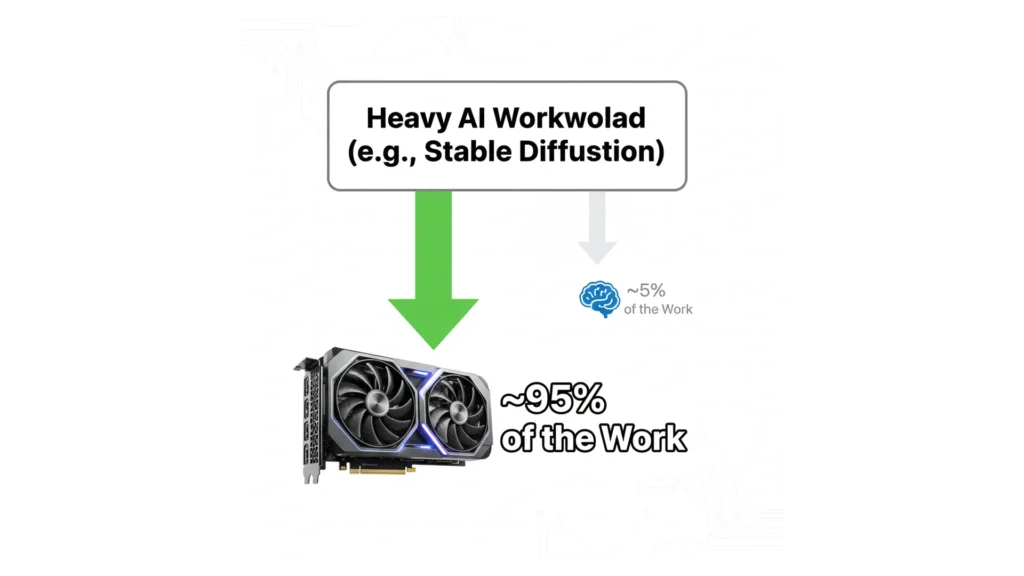
Productivity Tier List: Rendering and Encoding
For CPU-bound tasks like 3D rendering and video encoding, core count and architectural efficiency define the best CPU for productivity. Here’s a data-driven tier list based on recent CPU rendering benchmark data.
| Tier | CPU | Key Strengths & Data Points | Best For |
|---|---|---|---|
| S-Tier (Dominance) | AMD Ryzen 9 9950X | The rendering king. Its 16 Zen 5 cores consistently show a 5-8% lead in multi-core benchmarks like Cinebench and Blender over the 285K. | Professionals whose income depends on maximum rendering throughput. |
| S-Tier (Dominance) | Intel Core Ultra 9 285K | A very close competitor in performance, but wins on power efficiency, using 15-20% less energy for similar work output. | Users who value lower power bills and cooler, quieter operation under sustained loads. |
| A-Tier (All-Rounders) | Intel Core Ultra 7 265K | NPU SWEET SPOT. Offers 20 cores, strong multi-threaded performance, and the full NPU feature set at a reasonable price. The best value for creators who also frequent video calls. | Balanced gaming-and-productivity builds where the NPU’s specific strengths are actually useful. |
| A-Tier (All-Rounders) | AMD Ryzen 9 9900X | Awkwardly positioned. Most data suggests choosing the 9950X for more power or the 9700X for better value, as the 9900X’s 12-core setup doesn’t offer a compelling price-to-performance ratio . | |
| B-Tier (Efficiency) | AMD Ryzen 7 9700X | The 65W wonder. Surprisingly capable for its power class, delivering excellent performance-per-watt and easy cooling. Perfect for small form factor (SFF) builds. | Hobbyist creators and SFF builders who need solid performance without high thermals or power draw. |
| B-Tier (Efficiency) | Intel Core Ultra 5 245K | Adequate for light content creation but shows clear limitations in heavy, professional multi-threaded workloads. Not recommended for serious rendering . | Adequate for light content creation but shows clear limitations in heavy, professional multi-threaded workloads. Not recommended for serious rendering. |
Platform & Ecosystem: The Long-Term Decision
The CPU you buy today is only half the equation. The underlying motherboard platform dictates your upgrade flexibility, feature set, and total cost of ownership for the next 3-5 years. This isn’t just about raw specs; it’s a strategic decision about how your PC build will evolve.
The table below summarizes the core comparison to guide your writing:
| Feature | AMD AM5 | Intel LGA1851 |
|---|---|---|
| Official Support Timeline | Through at least 2027, confirmed by AMD CEO | No official multi-generational commitment |
| Current & Confirmed Future CPUs | Ryzen 7000, 8000G, 9000, 9000X3D series; Zen 6 expected | Arrow Lake (Core Ultra 200); possible minor refresh |
| Expected Upgrade Path | Long (3+ generations). Potential support for Zen 7 | Very Short. Next-gen Nova Lake (Core Ultra 400) in 2026 requires a new LGA1954 socket |
| Verdict for Upgrades | “The Clear Upgrade Path Champion” | “A ‘Buy It for Now’ Platform” |
AMD’s AM5: The Long-Term Investment
AMD has made a firm, public commitment to the AM5 platform, with CEO Lisa Su announcing support through at least 2027. This commitment mirrors the highly successful strategy used with the AM4 socket.
- Proven Track Record: The AM4 socket supported over five generations of CPUs, and AMD is repeating this model with AM5. The platform already supports Ryzen 7000 (Zen 4), 8000G (Zen 4), and 9000 (Zen 5) series processors.
- Clear Future Roadmap: Current roadmaps and industry reports strongly suggest that the upcoming Zen 6 architecture, and potentially even Zen 7, will also use the AM5 socket. This means a buyer today could potentially upgrade their CPU again in 2026 or 2028 without changing their motherboard.
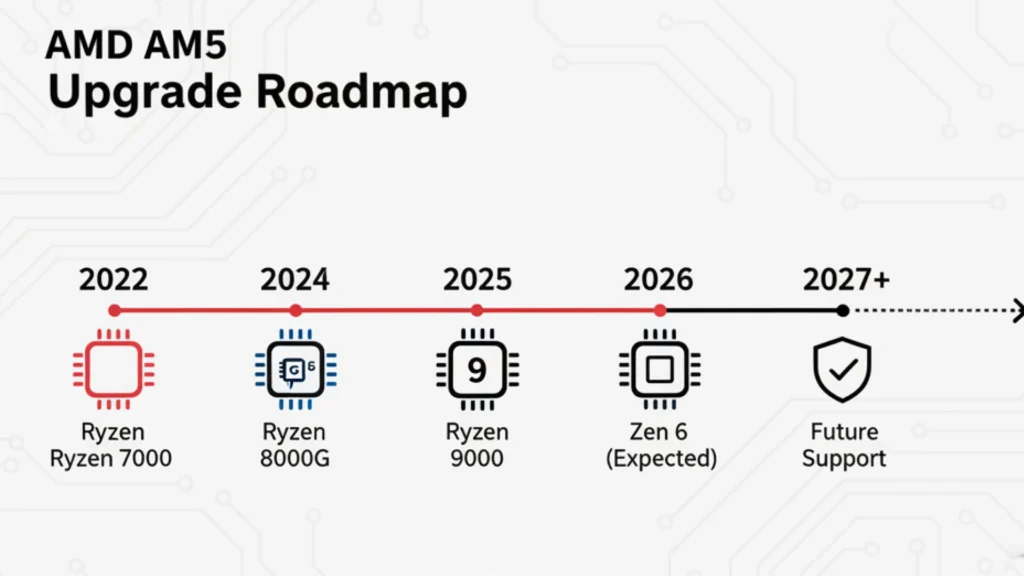
Intel’s LGA1851: The Short-Term Platform
Intel’s approach with the LGA1851 socket is markedly different. Historical precedent and recent leaks indicate a much shorter lifespan, limiting future CPU upgrades.
- Historical Precedent: Intel has typically changed its socket every two generations. The LGA1851 socket, launched in late 2024 with Arrow Lake (Core Ultra 200), is expected to follow this pattern.
- Next-Gen Incompatibility: Multiple hardware sources report that Intel’s next major desktop architecture, Nova Lake (expected as Core Ultra 400 in late 2026), will require a new LGA1954 socket. This means LGA1851 will likely host only one major CPU generation (Arrow Lake) and a possible minor refresh.
AM5 vs LGA1851: The Platform Longevity Verdict
When evaluating CPU platform longevity, the choice is clear. AMD’s AM5 is the undisputed champion for future CPU upgrades, with a confirmed support roadmap through 2027. Your motherboard investment today will accommodate multiple future CPU generations, protecting your budget and simplifying upgrades.
Intel’s LGA1851, while a capable modern platform, follows the company’s historical pattern of shorter socket lifecycles. Building on LGA1851 means your next significant CPU upgrade will likely require a full platform replacement, a new motherboard, and the associated cost and effort.
The Bottom Line:
- Choose AM5 if you value long-term flexibility and plan to upgrade your CPU within 2-3 years without changing your motherboard.
- Choose LGA1851 if you are building a “set-and-forget” system and prioritize today’s cutting-edge I/O over a long-term upgrade path.
For most builders, AM5 provides tangible future-proofing and represents the more strategic long-term investment.
The Final Decision: Who Should Buy What?
The data from thousands of benchmark runs is clear. Your perfect CPU depends entirely on your primary use case. Here is your definitive guide to making the right choice.
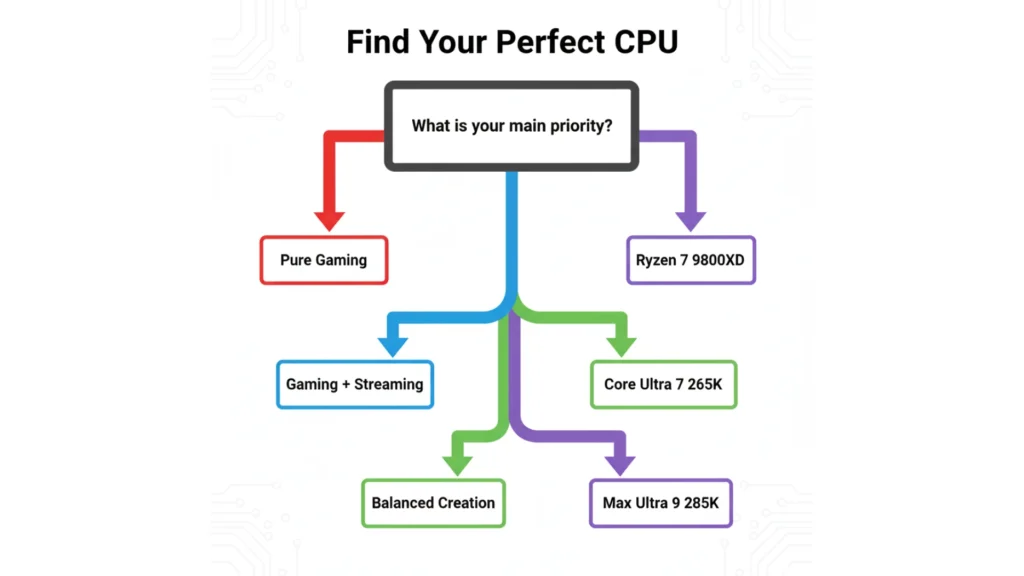
| Your Primary Use Case | Winner | Key Reason |
|---|---|---|
| Pure Gaming (1080p/1440p) | Ryzen 7 9800X3D | ~35% faster in 1080p gaming vs. Intel’s flagship; unbeatable price-per-frame and smooth 1% lows. |
| Streaming + Gaming | Ryzen 9 9950X | 16 cores handle gaming and high-quality x264 encoding simultaneously without compromising performance. |
| Content Creation (Budget) | Core Ultra 7 265K | Excellent value with 20 cores for rendering and an NPU for AI-enhanced tasks like video calls. |
| Pure Value / 1440p Gaming | Ryzen 7 9700X | Delivers ~95% of the flagship gaming experience for a fraction of the cost; incredibly power-efficient. |
| Power-Efficient Workstation | Core Ultra 9 285K | Demonstrates a ~10% power efficiency advantage in multi-threaded workloads, ideal for sustained productivity tasks. |
| Future-Proofing | Any AM5 CPU | AMD has guaranteed the AM5 socket will be supported through 2027+, protecting your motherboard investment for future CPU upgrades. |
Detailed Breakdown: Matching CPUs to Real Workflows
- For the Competitive Gamer: The Ryzen 7 9800X3D is in a league of its own. If your goal is to maximize frame rates in games like Counter-Strike 2 or Cyberpunk 2077, no other processor comes close. Its massive L3 cache delivers unmatched performance, making it the undisputed best gaming CPU you can buy.
- For the Streamer: The Ryzen 9 9950X is the ideal weapon. Its 16 cores provide the multi-threaded muscle needed to run a high-quality stream (using x264 encoding) while simultaneously gaming, all without causing frame drops or stutters. It offers a no-compromise solution for content creators who game.
- For the Budget-Conscious Creator: The Intel Core Ultra 7 265K hits a sweet spot. It offers strong multi-core performance for rendering and editing at a competitive price. Its integrated NPU is a genuine benefit for creators, efficiently handling AI tasks like background blur and noise suppression during client video calls.
- For the Value-Focused Gamer: The Ryzen 7 9700X is a revelation. At 1440p resolution, the performance difference with more expensive flagships becomes almost imperceptible. You get a top-tier gaming experience for a mid-range price, with the added benefits of low power consumption and easy cooling.
- For the Efficiency-Minded Professional: The Core Ultra 9 285K wins on refinement. For users running sustained workloads like rendering or compilation, its superior power efficiency translates to lower operational costs, reduced heat output, and quieter system operation over time.
- For the Forward-Thinking Builder: Choosing any AM5 CPU is the smartest long-term decision. AMD’s commitment to the platform means you can invest in a motherboard today and have a clear, affordable upgrade path to drop in a more powerful CPU in 2027 or beyond without changing the rest of your system.
The Bottom Line
- Choose AMD if… your priorities are peak gaming performance, exceptional value, and long-term platform longevity. For the vast majority of gamers and builders, AMD’s Ryzen lineup, particularly the X3D models, offers the most compelling combination of features.
- Choose Intel if… power efficiency in sustained productivity workloads is your primary concern, or you have a specific need for the NPU’s AI capabilities in your daily workflow for tasks like video conferencing.
